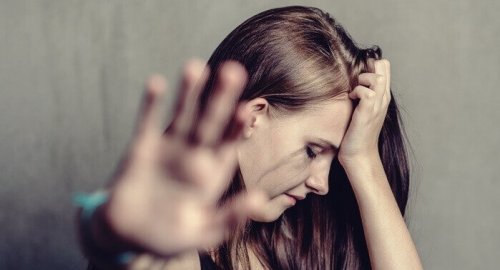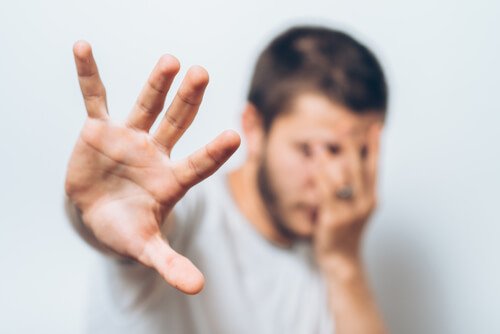LGBT Violence, An Invisible Issue

LGBT violence is the type of violence that occurs within a same-sex couple. This type of aggression, as in any other form of gender and domestic violence, is when one partner controls or dominates the other.
This is how the National Coalition Against Domestic Violence (NCAVD), one of the largest gay, lesbian, bisexual, and transsexual service associations, defines this type of violence. They try to shed some light on it so that victims have a voice to bring this issue that’s often swept under the rug out into the open.
Not many studies on this type of violence have been performed. The affectional and sexual relationship of homosexual couples is still hidden under a series of myths that idealize this type of relationship, omitting the fact that domestic violence is as prevalent in these relationships as it is in heterosexual ones.
Common Issues
LGBT violence is no different than domestic violence is heterosexual relationships. In the end, the aggressor seeks to control and subjugate their partner.
The escalation of abuse is defined as the progressive increase in violence. In the beginning, they’re actions that some may confuse with loving gestures. However, they progressively turn into the kind of aggressiveness and control that ends up isolating the weaker person.
The Cycle of Violence in Battered Women

The common cycle of violence has three specific phases:
- Tension-building phase. Small things that make the aggressor be more hostile towards their victim. It could be yelling, an unapproving, cold gaze in public, or the threat of a blow or a push. The victims tend to consider them isolated events they can control.
- Acute or crisis phase. When the tension reaches its boiling point, the aggressor unloads all of the anger and frustration they’ve been building up for so long. This is when the most violent acts occur. And where the battered person, usually a woman, ends up in the ER.
- Calm or honeymoon phase. When the aggressor feels remorse. They make all kinds of promises and tell their victim how much they love them. Then, they swear that it’ll never happen again and beg for a second chance. And they claim that the aggression was just an isolated outburst due to their daily frustration with life or some other misfortune. However, the cycle of violence tends to repeat itself.
Specific Types of Violence
However, certain types of violence within same-sex couples are different from the domestic violence that occurs in heterosexual couples:
- HIV-related violence. It should be noted that this isn’t exclusive to LGBT violence. But given its prevalence within this group, it’s worth mentioning. This kind of violence is brought about by the discovery of a possible victim’s positive diagnosis followed by the manipulation of this information. Abusers may also not allow their victims to take their medication.
- Violence over sexual identity. Using stereotypes that define the LGBT community to assault someone for resembling them. Also, preventing contact with or limiting someone’s participation in the community.
- Coming out of the closet. Some gay people hide their sexual orientation due to fear of stigmatization and rejection. The aggressor can use this fear and threaten to reveal their secret to their victim’s relatives or boss. The goal is to isolate the victim from their community.
Circumstances of LGBT Violence
LGBT violence is a silenced reality because some victims don’t report their cases due to double victimization: the victim is abused by their partner but is also stigmatized for being homosexual. Thus, the fear of being mocked or having to publicly “prove” their sexual orientation is a trauma they’d rather not go through.
Also, this type of violence isn’t relevant due to the following reasons:
- Lack of informative scientific studies. LGBT domestic violence is seldom mentioned, not even in mainstream media.
- Lack of awareness of the victims to perceive themselves as such. Also, a lack of knowledge regarding the elements that turn them into victims. This often keeps them from making decisions that could quickly solve their problems.
- Social discrimination of LGBT relationships. It either underestimates them or doesn’t give enough importance to the problems that arise within their group. It tends to minimize them and not take them seriously.
- Myths about relationships between people belonging to the LGBT community.

Interesting Data
In 2009, the National Coalition Against Domestic Violence carried out a study on LGBT violence and published a report with the results.
Most domestic violence victims are women, 75.5% in comparison to 23%. Domestic violence tends to occur between the ages of 21 and 40 years. Thus, the victims and their aggressors are predominantly young.
Most of the violence is psychological, such as belittling and humiliation. However, physical violence is the ultimate weapon. When an aggressor’s attempts at psychological dominance fail, they may turn to physical violence.
How to Confront LGBT Violence
NCADV has been fighting to include LGBT violence in domestic violence laws. Right now, most of the protections are for women who are victims of domestic violence. Their aggressors are mostly male. In this regard, the victims of LGBT violence aren’t comfortable receiving this type of help because they’re not a “regular” couple made up of a man and a woman.
Domestic violence isn’t exclusive to heterosexual or LGBT relationships. Violence is violence. And one form of it isn’t more important than the other. All victims deserve attention.
This text is provided for informational purposes only and does not replace consultation with a professional. If in doubt, consult your specialist.








